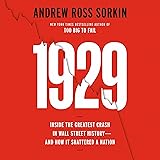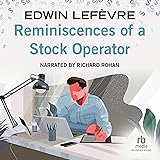The allure of gold has captivated humanity for millennia, serving as a symbol of wealth, status, and stability. However, the modern investor faces a crucial question: are you **investing in gold** the right way in today’s dynamic financial landscape? As the recent video highlights, with gold prices reaching unprecedented levels—hovering around ₹1 lakh for every 10 grams, translating to a staggering ₹1 crore per kilogram—many find themselves at a crossroads, questioning whether to buy, sell, or wait. This dilemma often causes individuals to overlook the broader strategic picture of gold’s role in a well-diversified portfolio.
The financial markets, much like the changing seasons, present cycles of boom and bust. It is during these periods of uncertainty that gold traditionally shines. While some may view current prices with trepidation, a deeper analysis reveals gold’s enduring significance as a fundamental asset. Understanding its historical performance, its function as a portfolio hedge, and the most efficient digital avenues for investment—specifically Gold Exchange Traded Funds (ETFs) versus Gold Mutual Funds—is paramount for the discerning investor. Let us delve into these critical aspects, expanding on the insights shared in the video, to help you navigate the complexities of modern **gold investment**.
The Enduring Sparkle: Gold’s Historical Performance in India
For investors charting a course through volatile markets, historical data provides a beacon. Recent analysis, particularly a comprehensive article from CapitalMind titled “100 years of gold in India and the Lindy effect” penned by Anoop Vijaykumar, offers profound insights. This study, spanning 55 years of data from 1970 to 2025, reveals a compelling narrative for the Indian investor.
When measured in Indian Rupees (INR), gold has delivered an impressive annualized average rate of return of 13.3%. This figure stands remarkably competitive when juxtaposed against the performance of the Nifty 50, India’s benchmark stock market index. Over extended periods, typically 10 to 25 years, the Nifty 50 has yielded average annual returns ranging between 12-13%. Consequently, gold, often perceived as a passive asset, has not only kept pace but slightly outpaced the returns of the top 50 Indian companies without the inherent volatility associated with equities.
Unpacking the Lindy Effect in Gold Investment
The “Lindy Effect” suggests that the future life expectancy of some non-perishable things, like a technology or an idea, is proportional to their current age. In simple terms, the longer something has been around, the longer it is likely to remain around. Applied to gold, its thousands of years of human relevance as a store of value and medium of exchange signify its deep-seated and likely perpetual role in finance. This historical longevity reinforces the notion that gold is not merely a transient fad but a timeless asset with inherent value, solidifying its place in a long-term investment strategy. Despite temporary fluctuations, gold’s long-term existence and utility underscore its enduring financial power, much like an ancient river that continues to flow through changing landscapes.
Gold as a Portfolio Anchor: Hedging Against Market Storms
While attractive returns are a compelling reason to consider **investing in gold**, its primary strategic value lies in its role as a portfolio stabilizer, acting as a hedge against market downturns. The conventional wisdom posits that when equity markets falter, gold tends to either maintain its value or appreciate, thereby cushioning the blow to a diversified portfolio. This inverse correlation is not merely theoretical; it is vividly demonstrated by real-world market events.
Consider the stark example of the COVID-19 induced market crash in March 2020. During this turbulent period, the Indian equity market, represented by the Nifty 50, experienced a precipitous drop of 38.1%. Conversely, gold, embodying its safe-haven characteristic, surged by approximately 14% over the same timeframe. This countercyclical movement underscores gold’s profound ability to mitigate drawdowns, effectively preventing the portfolio from plunging into deeper negative territory.
Further analysis of a 50-50 portfolio allocation between Nifty and gold from 2007 to 2025 yields revealing insights. While a pure equity portfolio could have faced a maximum drawdown of nearly -59% during its worst periods, a balanced portfolio incorporating gold would have seen its maximum drawdown limited to -34%. This represents a near halving of potential losses, showcasing gold’s robust capacity to act as a financial shock absorber. Thus, gold functions as a dependable ballast, preventing the portfolio ship from capsizing during severe market storms, allowing investors to weather volatility with greater resilience.
The Evolving Landscape of Gold Investment: From Tangible to Digital
Historically, **investing in gold** often involved acquiring physical forms such as jewelry, coins, or bars. However, these traditional methods come laden with practical challenges. Gold jewelry, for instance, often carries significant making charges and purity concerns, diminishing its pure investment value. Physical gold in the form of bars or coins, while devoid of making charges, presents considerable storage and security dilemmas, necessitating secure lockers and insurance, which incur additional costs and logistical complexities.
In recent years, Sovereign Gold Bonds (SGBs) emerged as a popular government-backed alternative, offering interest payments along with capital appreciation. However, as the video indicates, recent governmental execution and price surges have made primary issuance of SGBs less likely. Consequently, investors must now turn to the secondary market for SGBs, or increasingly, consider other digital avenues.
This shift underscores the growing prominence of digital gold products, which circumvent the storage, security, and purity issues associated with physical gold. The two primary contenders in this digital realm are Gold Exchange Traded Funds (ETFs) and Gold Mutual Funds (often structured as Fund of Funds). These instruments democratize gold ownership, making it accessible, secure, and liquid, allowing investors to participate in the gold market with unprecedented ease.
Digital Gold Decoded: Gold ETFs vs. Gold Mutual Funds
When transitioning from physical gold to digital forms, understanding the mechanisms and distinctions between Gold ETFs and Gold Mutual Funds becomes critical. Both offer exposure to gold price movements, yet their operational structures, liquidity profiles, and associated costs vary significantly. Selecting the appropriate vehicle requires a careful assessment of one’s investment goals, trading preferences, and existing financial infrastructure.
Gold Exchange Traded Funds (ETFs): Directness and Agility
Gold ETFs are investment instruments that trade on stock exchanges, much like individual company shares. Each unit of a Gold ETF typically represents a small, fixed quantity of physical gold, usually 1 gram or a fraction thereof. The fund itself holds physical gold as backing for the units issued, ensuring that your investment is directly correlated to the price of the underlying commodity. This direct investment model means Gold ETFs offer transparency and a straightforward linkage to international gold prices.
A key characteristic of Gold ETFs is their high liquidity. Because they are traded on exchanges during market hours, investors can buy and sell units throughout the day at prevailing market prices, offering immediate execution akin to trading stocks. This real-time trading capability makes ETFs highly appealing for those who prioritize flexibility and rapid transaction execution. Furthermore, acquiring Gold ETFs necessitates a Demat (dematerialized) account, as they are held in electronic form, much like shares.
Gold Mutual Funds: Convenience and Diversification by Proxy
Gold Mutual Funds, often structured as Gold Fund of Funds, operate differently. Instead of directly holding physical gold, these funds typically invest in a portfolio of underlying Gold ETFs. This layered approach means that while you are investing in gold, you are doing so indirectly through a professionally managed fund that selects and balances various Gold ETFs. The fund manager’s expertise is leveraged to optimize the selection and allocation of these underlying ETFs, potentially offering a diversified exposure within the digital gold segment.
Unlike ETFs, Gold Mutual Funds are not traded continuously on the stock exchange. Transactions occur at the end of the trading day based on the fund’s Net Asset Value (NAV). This means there is a slight lag in buying or selling, as the order is processed at the day’s closing NAV. While a Demat account is not strictly necessary if you invest through a broker or agent (who may hold units on your behalf), investing directly with the fund house typically still requires one. The convenience often touted for mutual funds includes the ability to invest without needing a trading account immediately, making them accessible to a broader base of investors.
Dissecting the Differences: Demat, Expenses, Liquidity, and Taxation
A granular comparison between Gold ETFs and Gold Mutual Funds reveals specific differences that can significantly impact an investor’s experience and returns. Understanding these nuances is crucial for making an informed decision about your **gold investment** strategy.
Demat Account Requirement
For Gold ETFs, a Demat account is an indispensable prerequisite, as they are traded and held in a dematerialized format on the stock exchange. This is similar to trading equity shares, providing a seamless experience for those already active in the stock market. In contrast, Gold Mutual Funds offer a degree of flexibility. While direct investments with the fund house might require a Demat account, many investors opt to purchase through brokers or agents. These intermediaries often facilitate investments without the immediate need for a personal Demat account, making Gold Mutual Funds potentially more accessible to new investors who might not yet have a trading setup.
Expense Ratios: The Cost of Management
Expense ratios represent the annual fees charged by fund managers to cover operational costs. For Gold ETFs, these ratios are typically lower, often ranging from 0.5% to 1%. The reason for this efficiency lies in their passive nature: Gold ETFs primarily aim to track the price of physical gold, requiring minimal active management or extensive research teams. Consequently, a larger proportion of your investment directly contributes to gold exposure, leaving less for administrative overheads. For instance, an expense ratio of 0.5% means only ₹0.50 per ₹100 invested goes towards fund management, with ₹99.50 being invested in gold.
Conversely, Gold Mutual Funds, especially those structured as Fund of Funds, generally incur higher expense ratios, often ranging between 1% and 2%. This higher cost is attributable to the active management involved in selecting and rebalancing a portfolio of underlying Gold ETFs. The need for a dedicated team, research capabilities, and sophisticated algorithms to analyze market conditions and optimize ETF allocation justifies these increased operational expenses. However, it’s worth noting that some Fund of Funds, particularly newer ones or those with specific strategies, can offer surprisingly low expense ratios, sometimes even below 0.2%, as observed with some prominent examples like Axis Gold Fund or SBI Gold Fund of Funds. This anomaly suggests that while the general rule holds, specific offerings can diverge.
Liquidity: Speed of Access to Capital
Liquidity, or the ease with which an asset can be converted into cash, is a significant differentiator. Gold ETFs boast high liquidity, mirroring the stock market’s real-time trading environment. Investors can buy or sell units at any point during market hours, with trades settling rapidly, often allowing funds to be credited to the bank account within one business day. This rapid redemption capability is highly advantageous for investors who prioritize immediate access to their capital or wish to capitalize on short-term market movements.
Gold Mutual Funds, operating on an end-of-day NAV basis, exhibit comparatively lower liquidity. Purchase or redemption orders are processed at the NAV declared at market close, leading to a typical settlement period of 24 to 48 hours for funds to reach your bank account. This timeline can extend further if weekends or public holidays intervene, potentially causing delays of several days. Therefore, for investors requiring quick access to their investment, Gold ETFs present a clear advantage over their mutual fund counterparts.
Taxation: Capital Gains and Efficiency
The tax implications for both Gold ETFs and Gold Mutual Funds are identical, falling under the purview of capital gains tax. If an investment is held for less than one year, it is categorized as a short-term capital gain (STCG) and taxed at a flat rate of 20%. Conversely, if the investment is held for more than one year, it qualifies as a long-term capital gain (LTCG), currently taxed at 12.5%. While there is a possibility that the LTCG rate might increase to 15-20% in the future, the current tax structure provides a clear framework.
However, an interesting nuance emerges in terms of tax efficiency. Gold ETFs, being passively managed and directly linked to physical gold, typically involve less frequent trading within the fund itself. This often results in fewer instances of capital gains or losses being generated at the fund level, potentially making them more tax-efficient for the end investor. Gold Mutual Funds, especially actively managed Fund of Funds, may engage in more frequent buying and selling of underlying Gold ETFs to optimize returns or rebalance the portfolio. This active trading can sometimes generate capital gains within the fund, which might indirectly affect the investor’s tax liability even if their personal returns are comparable.
Navigating Gold Investment: Recommended Funds and Strategic Approaches
With a clearer understanding of digital gold instruments, the next logical step is to explore specific options and adopt a strategic approach to **investing in gold**. The market offers a plethora of Gold ETFs and Gold Mutual Funds, each with its unique characteristics. It is crucial to remember that personal research and due diligence are paramount before making any investment decisions.
Prominent Gold ETFs for Consideration
For investors leaning towards the directness and liquidity of ETFs, several established players offer robust options. These funds typically track domestic gold prices and are backed by physical gold holdings:
- Zerodha Gold ETF (GOLDCASE): Known for its competitive expense ratio, often around 0.32%, making it one of the more cost-effective options for passive gold exposure.
- ICICI Prudential Gold ETF: A large and liquid fund with Assets Under Management (AUM) exceeding ₹7,000 crores, featuring an expense ratio of approximately 0.5%. Its significant size often indicates robust trading volumes.
- HDFC Gold ETF: Another major player, managing an AUM of ₹9,000-10,000 crores, albeit with a slightly higher expense ratio of 0.59%. Its extensive AUM reflects strong investor confidence.
- SBI Gold ETF: Offers a reliable option with an expense ratio around 0.73%, backed by the State Bank of India’s vast financial infrastructure.
- Nippon India ETF Gold BeES: The most popular and largest Gold ETF in India, boasting an AUM over ₹18,000 crores and an expense ratio of approximately 0.82%. Its sheer size guarantees high liquidity and widespread acceptance.
Leading Gold Mutual Funds (Fund of Funds)
For investors who prefer the managed approach of mutual funds, particularly the Fund of Funds structure, these options provide diversified exposure to underlying Gold ETFs:
- Axis Gold Fund: Features a remarkably low expense ratio, sometimes as low as 0.17%, and has shown strong historical performance, with a 5-year CAGR around 15%. This suggests efficient management of its underlying ETF portfolio.
- HDFC Gold Fund of Funds: Another cost-effective choice with an expense ratio of approximately 0.18%, leveraging the brand’s broad appeal and investment expertise.
- Invesco India Gold ETF Fund of Funds: Offers an extremely low expense ratio, often around 0.1%, making it highly attractive for cost-conscious investors.
- SBI Gold Fund of Funds: Similarly provides a low-cost entry into gold investment with an expense ratio near 0.1%, building on the trust associated with the SBI brand.
The surprisingly low expense ratios of these specific Gold Mutual Funds, especially when compared to the general 1-2% range mentioned earlier, primarily stem from their structure as ‘Fund of Funds.’ They typically invest in existing, well-established Gold ETFs, which are already passively managed and have their own low expense ratios. The ‘Fund of Funds’ layer simply aggregates these, often passing on the efficiency of the underlying ETFs with minimal additional management overhead, especially if the strategy is largely passive selection rather than active trading of the underlying ETFs.
The Prudent Approach: SIP and Defying Market Timing
The perennial question for investors is whether the present moment is the “right” time to make a move. However, as experience and data consistently demonstrate, attempting to time the market—predicting its peaks and troughs—is an exceptionally difficult, often futile endeavor. Even seasoned experts rarely succeed consistently. For the average investor, this pursuit usually leads to suboptimal returns and considerable anxiety.
Instead, a disciplined and systematic approach, such as a Systematic Investment Plan (SIP), proves far more effective. By committing to regular, fixed investments in gold, irrespective of its current price, investors can leverage the power of rupee cost averaging. This strategy means that when gold prices are high, your fixed investment buys fewer units; conversely, when prices are low, the same investment acquires more units. Over an extended period, this averaging effect smooths out the purchase price, insulating the portfolio from short-term volatility and optimizing long-term returns.
This principle applies universally across asset classes, from equity mutual funds to debt instruments. Embrace the idea that you, as an individual investor, are not a market oracle. Instead of trying to outsmart the market, focus on consistency and long-term vision. A well-structured SIP for your chosen digital gold instrument—whether an ETF or a mutual fund—allows you to participate steadily in gold’s historical growth trajectory, much like a consistent drip eventually fills a bucket, regardless of immediate flow variations. This methodical strategy ensures that you capture the long-term benefits of **investing in gold** without the stress of perfect timing.
Final Recommendation: Simplicity and Efficiency in Gold ETFs
Given the detailed comparison, the choice between Gold ETFs and Gold Mutual Funds ultimately hinges on individual investor preferences. However, if asked for a personal recommendation, Gold ETFs often present a more compelling proposition due to their inherent simplicity and operational efficiency.
The primary advantages of Gold ETFs include their superior liquidity, allowing for real-time buying and selling during market hours, which offers unparalleled flexibility. Furthermore, their typically lower expense ratios mean that a larger portion of your capital is directly invested in gold, maximizing your exposure to the asset’s price movements and minimizing frictional costs. The direct correlation to physical gold prices and the ease of managing them through a standard Demat account further enhance their appeal.
For those comfortable with a Demat account and stock market trading, Gold ETFs make the entire process of **investing in gold** exceptionally straightforward. Setting up an SIP is also very easy, automating your investments and ensuring disciplined participation. This blend of convenience, cost-effectiveness, and directness makes Gold ETFs an excellent choice for a wide spectrum of investors looking to incorporate digital gold into their portfolios efficiently and strategically.











